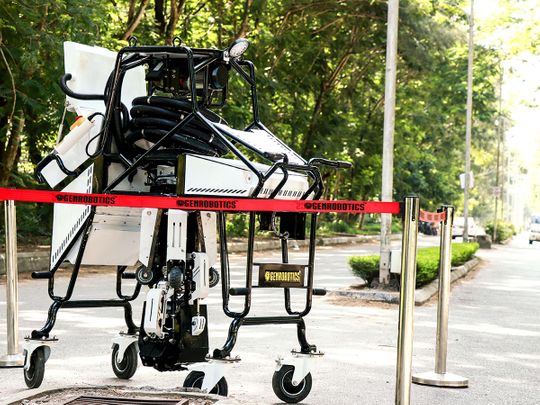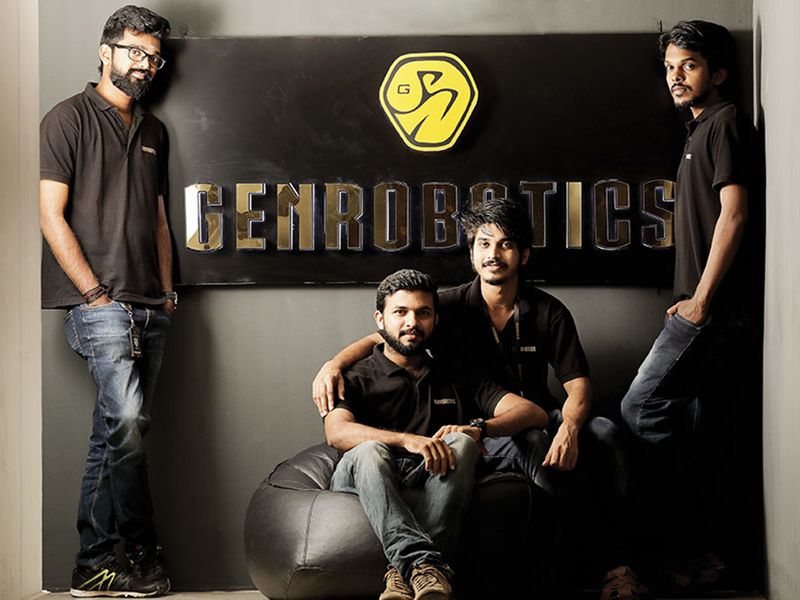
N. Sakthivel, 27, and R. Madhavan, 38, died at work in the south Indian metropolis of Trichy in the state of Tamil Nadu last month. They are the latest to succumb to what is literally one of the filthiest jobs in the world, cleaning sewers, taking the toll to 50 in the first six months of 2019 in India, according to the National Commission for Safai Karamcharis (SKA), a federal association of sanitation workers.
Even though in 2014 the Supreme Court abolished manual scavenging, a term used in India to refer to cleaning untreated human waste, SKA estimates that 770,000 cleaners still enter sewers each year for as little as Rs300 per day. Incidentally, sewage networks cover only 40 per cent of urban India; many households still rely on septic tanks or dry latrines. The workers are often not provided with safety equipment and are continually exposed to gases such as ammonia and methane and are highly susceptible to both microbial infections and psychological trauma.
But things are slowly changing. A robot army could soon go to work underneath India’s major cities, as well as here in Dubai, with few people likely to raise a finger in protest as jobs are replaced and modified. In the process, health and safety conditions will improve dramatically and dozens of lives will be saved each year.
We’ve also signed a memorandum of understanding with Dubai Municipality and will soon start working in Dubai.
That’s the promise of Bandicoot, a remote-controlled 50kg robot named after a species of rodent common to the Indian subcontinent. Created by Genrobotics, a team of engineers from Kerala, it has already been deployed across seven other Indian states, including Maharashtra, Gujarat and Haryana, CEO Vimal Govind, one of the firm’s founders, tells GN Focus. “We’ve also signed a memorandum of understanding with Dubai Municipality and will soon start working in Dubai,” he says. The agreement came about following Genrobotics’ participation last year in the fifth cohort of Dubai Future Accelerators, an intensive programme that pairs technology developers from around the world with government organizations in the UAE.
A bit like a giant spider with a bucket, the pneumatic robot can be lowered into a manhole to unblock drains and collect and deposit any debris above ground. With a body of stainless steel and carbon fibre, it is operated remotely over WiFi or Bluetooth from a handheld smartphone. A live video feed allows the internal inspection of sewers.
“Bandicoot’s distinct mechanical design and artificial intelligence system operates just like a human being, but is a far more efficient, elegant and economic solution,” Govind says. A team of five sanitation workers can clean two to three manholes per day, he adds. By contrast, a single operator using one Bandicoot can service triple the number of units in the same time. “In every aspect, robots are better than humans – and they won’t die inside manholes!”

The spark
The idea for a sewer-cleaning robot came from the Kerala government, which approached Govind and his team because of their work on creating a 14-foot mechanical exoskeleton that mimics human movement – sort of like the comic character Iron Man. Genrobotics has since won the interest of private backers, including Google alumnus Rajan Anandan, Managing Director of Indian venture capital firm Sequoia.
“This innovation will impact 4 million [scavengers in India], which means 25 million family members who are all going to have very different lives because of this one innovation,” Anandan said in a testimonial on Genrobotics.
Bandicoot is one of over a dozen innovations being developed across the country to replace manual scavenging. Sewer Croc, created last year by a group of aerospace and mechanical engineers in nearby Bengaluru, has recently been put to work cleaning sewers in the southern city of Hyderabad.
The initial capital outlay required has been a major reason why municipalities are hesitant to embrace robotic solutions. Each Bandicoot unit costs Rs3.2 million to build, for instance. However, municipal authorities can break even within two years, Govind says.
He and his team believe the robot can be pressed into use around the world. “Manual scavenging is not only a problem in India — manhole deaths are reported from various parts of the world. Even in the United States, a manhole death was recently reported in Pennsylvania,” says Rashid K., Genrobotics’ COO. “So we are planning to deploy this robot across the world, specifically in developing countries in Asia, Africa and Latin America that are facing issues in the sanitation sector.”
Over the long term, he says, the company hopes to turn Bandicoot into an intelligent robot that can detect blockages automatically via GPS, and then travels to the location and swings into action. “We are in an era of self-driving cars. So the future of Bandicoot will be a blend of AI and robotics, used for automatic manhole cleaning across cities without human interference.” Certainly, it’s one area where humans will likely be glad to let robots have their jobs.













